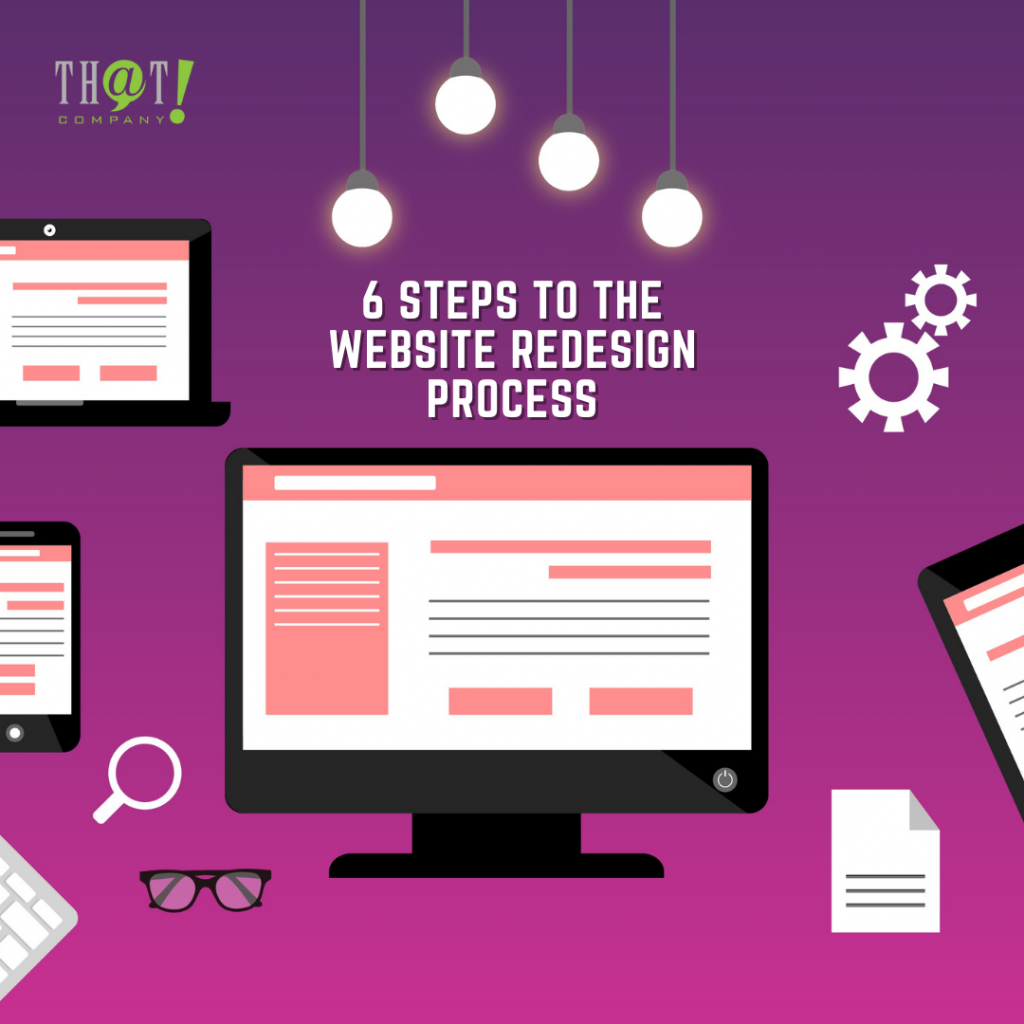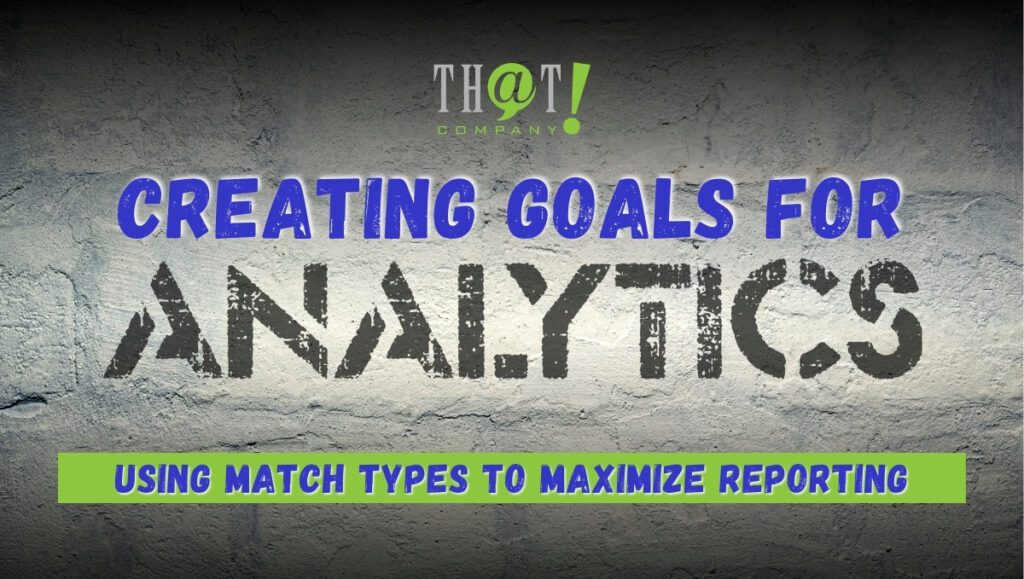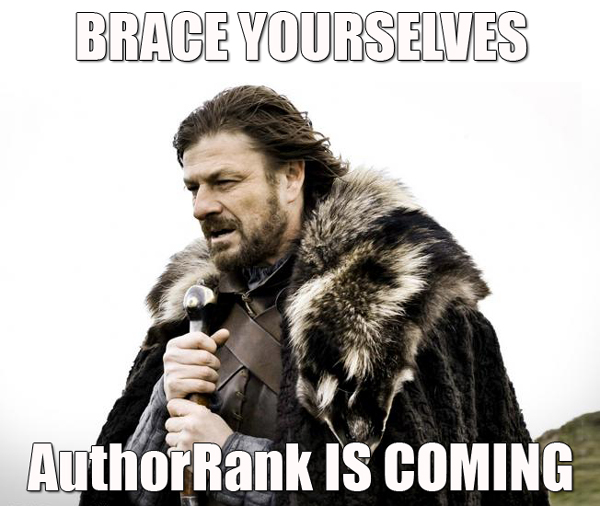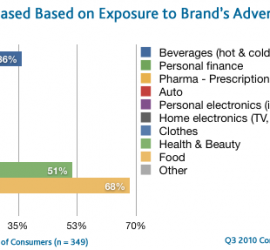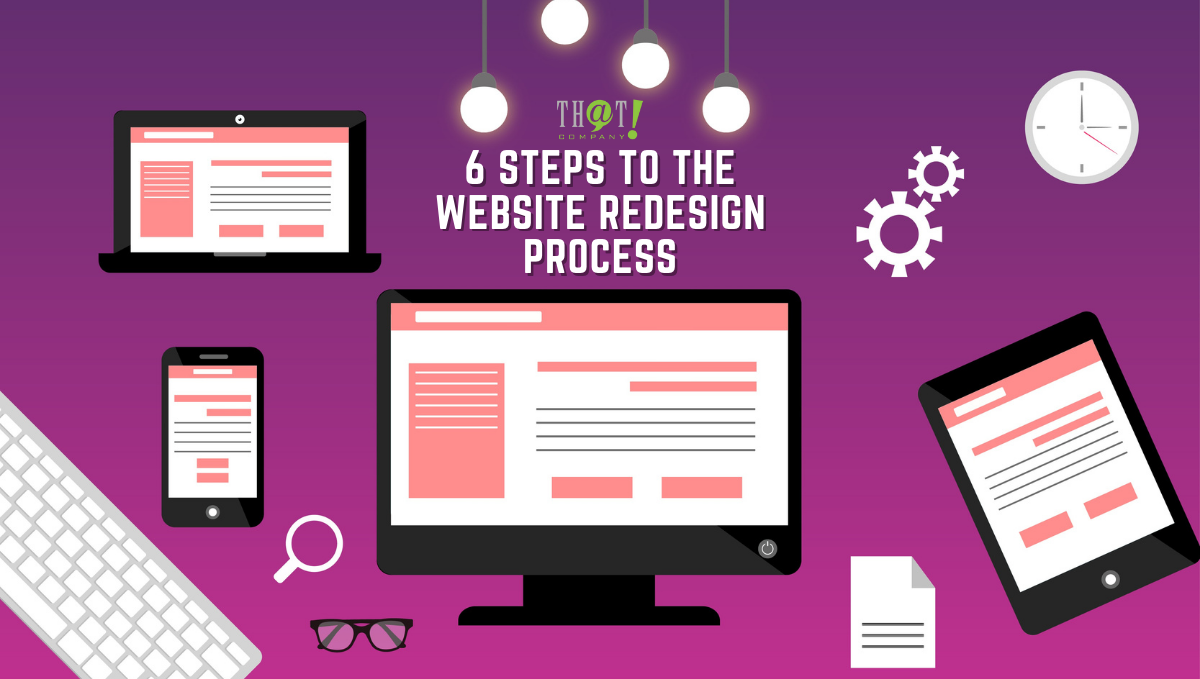
Before we define the steps in redesigning a website process, let’s find out the meaning of website redesign. A website redesign is a comprehensive process of revamping your site, which involves updating content, refreshing layouts, and boosting navigation for better conversions and site performance.
Discontent with the way your website looks. Do you think your website could utilize an upgrade? If so, here is an extensive outline of the website redesign process so you’ll have an idea of what to do next.
The website redesign process can be quite challenging if you aren’t accustomed to it, but there are a few simple steps you can take to make the entire project much simpler, faster, and more successful. You can follow these steps for a more efficient and successful website redesign.
Step 1: Evaluating the Website
 The very first step is to have your website assess your current web pages to examine if the content on the page should be kept, updated, or should be deleted. Recognize what is working and what isn’t. Examine the strengths and weaknesses of your current website and gauge your current metrics and analytics data. You must start with Google Analytics and learn how to set up, install and analyze the data to make your website load faster.
The very first step is to have your website assess your current web pages to examine if the content on the page should be kept, updated, or should be deleted. Recognize what is working and what isn’t. Examine the strengths and weaknesses of your current website and gauge your current metrics and analytics data. You must start with Google Analytics and learn how to set up, install and analyze the data to make your website load faster.
Make a list of your universal keywords and incorporate them on every page of your website. You can find these on Google Analytics. Change or update any unactivated pages and delete any unnecessary web pages. As you go through the process, you must understand that some pages may be too bad to bother with as compared to their traffic count.
Next, assess the content on your current website. Your current content is important as it can lead to conversions which result in an increase in traffic and a lower bounce rate. High-quality content will always attract visitors, but this is not enough if it leads nowhere and gives no value to the visitor.
[bctt tweet=”A website redesign is a comprehensive process of revamping your site, which involves updating content, refreshing layouts, and boosting navigation for better conversions and site performance.” username=”ThatCompanycom”]Having a white label web design, an experienced designer can completely redesign your website to bring it in line with your requirements and expectations, while maintaining the essential features of the existing website. Browse our website to answer the question “what is white label?” and how it can help you on your digital marketing journey.
Also, you must have a website audit by a web designer to verify the site’s overall design and suggest any significant details that would help your website work more efficiently and look appealing to your visitors.
Step 2: Identifying Goals for the Website Redesign Process
If you don’t have any goals or vision for your website, it would be impossible for you to make your redesign process easy and make your goal laser focus on achieving your business success.
Set first to make a list of your goals and envision the result. Are you just looking for a professional website or are wanting to generate more leads and sales? Whatever your goals are you’ll need to be clear to build a website redesign process that will live up to your expectations.
Define what you want to improve on.
The next step is to define what you want to improve (either your online storefront or your website as a whole). Your goals will change as far as what you need to work on and what outcome you’re looking for. For example: If your company is working towards growing and deepening relationships with clients, you’ll need to build websites that are highly customizable, easy-to-navigate, modern, user-friendly, and highly optimized for search engines. If your company is aiming for more sales revenue by improving SEO optimization, then you’ll need to look at how social media marketing can be integrated into the website design plan.
Step 3: Building Strategy
 In this step, your website redesign team will draft a plan for reaching your goals based on your needs. If you are just plainly looking to enhance your site into a more professional profile then make a thorough research of your competitor’s websites, as well as websites you find interested in outside your industry, to have a better understanding of the look that you are planning for.
In this step, your website redesign team will draft a plan for reaching your goals based on your needs. If you are just plainly looking to enhance your site into a more professional profile then make a thorough research of your competitor’s websites, as well as websites you find interested in outside your industry, to have a better understanding of the look that you are planning for.
Verify your content needs and make a good list of the ones that should be revised and the ones that should be added. You may want to keep track of all your content needs and make a good spreadsheet for them.
You will also need to find out the major and minor goals and objectives you want to achieve with your site. With this, you will narrow down your content needs and revise an outline for your new website. You can then discuss it with your web designer or IT professional and come up with a practical plan on how the new site will look based on these goals, objectives, contents, etc.
Step 4: Needs Assessment
It is a must to check on your goals and after that, your deliverables that are needed to execute the website redesign process successfully are indicated and allocated to contributors for delivery. Like commonly the assets of the site such as content, graphics, brand brief, etc. Also, it is recommended to get advice from your team or employees since they can provide objective perspectives on the website.
It is recommended to use the existing brand guidelines for the site to hold it consistent with the rest of your communication platform.
Step 5: Implementation
Afterward, your web design team applied for all the work and polished the design. In this stage, you will consider sitemaps, wireframes, mockups, etc. for feedback. Any mandatory adjustments are made to progress the process along. Otherwise, the whole website will be changed to reflect any changes, which may cost you more money.
Once you go through all the feedback and everything has been fixed, it is time to start your next step which is to run through your site with clean data (sites that are not currently ‘live’) and find the issues.
For example, if you have rendered services wrong it will be hard for them to function properly. Another example of problems would include images not looking good using your brand colors or your brand logo or font. Exceptionally, this would require updating the images on every page of your website where it is hooked up (creating extra work).
Step 6: Review & Launch
 Testing the newly revamped site is the final part of the website redesign. At this stage, you will test drive the website to make sure that it is fully working, error-free, forms work, and most importantly the website works across all browsers and devices smoothly. Once checked thoroughly then, waive the website to launch. Feedback is vital to any website change. Each designer has their their style of designing, while some elements are simple, there might be an element that needs to be changed or redesigned. The feedback has to be done before the launch of the website because at this stage it’s possible for any problem found in the website redesign process to get rectified without any due.
Testing the newly revamped site is the final part of the website redesign. At this stage, you will test drive the website to make sure that it is fully working, error-free, forms work, and most importantly the website works across all browsers and devices smoothly. Once checked thoroughly then, waive the website to launch. Feedback is vital to any website change. Each designer has their their style of designing, while some elements are simple, there might be an element that needs to be changed or redesigned. The feedback has to be done before the launch of the website because at this stage it’s possible for any problem found in the website redesign process to get rectified without any due.
Once all the tests were passed successfully then you are good to go for the website launch. During this stage, if it’s a client-side application being made then the client should have the login credentials details ready.
Finalizing the website after the launch stage has been completed.
After everything was clean and perfect for launching. This is the last step of any website redesign process and presents a final product to the viewers and clients and at this stage, all your hard work is finally over and now it’s time to relax. Congratulations on the launch of your new website.

